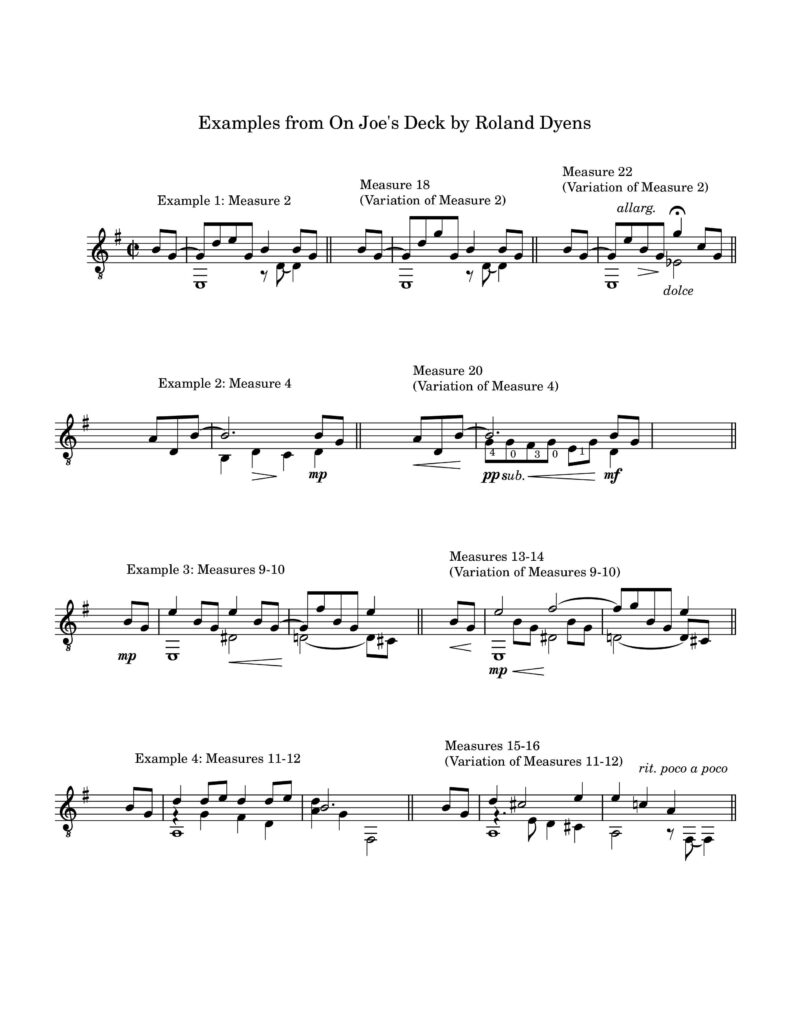Les 100 de Roland Dyens by Roland Dyens (1955-2016) is an excellent source of repertoire for beginning composers to study artistic applications of a number of compositional techniques. This post will focus on varied repetition in On Joe’s Deck, which is of the first compositions in Volume 1 of Les 100 de Roland Dyens. It is also available as an individual composition.
On Joe’s Deck is written in ternary form (ABA’). The sections can easily be identified and labeled in the score: the opening A section is measures 1-8, the B section is measures 9-16, and the repeat of the A section is measures 17-24. Examples 1 and 2 show variation in the repeat of the A section.
In Example 1, the original figure in measure 2 of the A section (and also in measure 6) is varied in measures 18 and measure 22, both of which are in the repeat of the A section. The variation in measure 18 consists of the changing of only one note (E to G). However, measure 22 is a more elaborate variation that includes a figure that places the high G directly on a beat with a fermata and accompanied by the expressively dissonant bass note Eb.
In Example 2, an inconclusive cadence in measure 4 (A section) is varied in measure 20 (repeat of the A section) to include a new figure that has more forward energy than the figure in measure 4.
The B section (measures 9-16) is a period made of two phrases. The first phrase is measures 9-12 and the second phrase is measures 13-16. The second phrase is a variation of the first phrase. Examples 3 and 4 show variation in the second phrase.
In Example 3, the upper voice remains mostly on the high note E in measures 9 and 10, rising to an F# one time. Additionally, the B and G are beamed as part of the upper voice. When the figure is presented again in measures 13 and 14, the upper voice rises to a G, and the B and G are beamed as an inner voice, separating them from the ascending E, F#, G line.
In Example 4, the ending of the first phrase (measures 11-12) is varied when it is repeated (measures 15-16). The pitches in measure 16 work in tandem with the marking “rit. poco a poco” to create a seamless transition from the ending of the B section into the repeat of the A section.
Here is a link to a performance of On Joes Deck (with an optional cello part) (https://www.youtube.com/watch?v=ndEqNjnmNfo)

You can download a .pdf of the example page by clicking on the button below.
